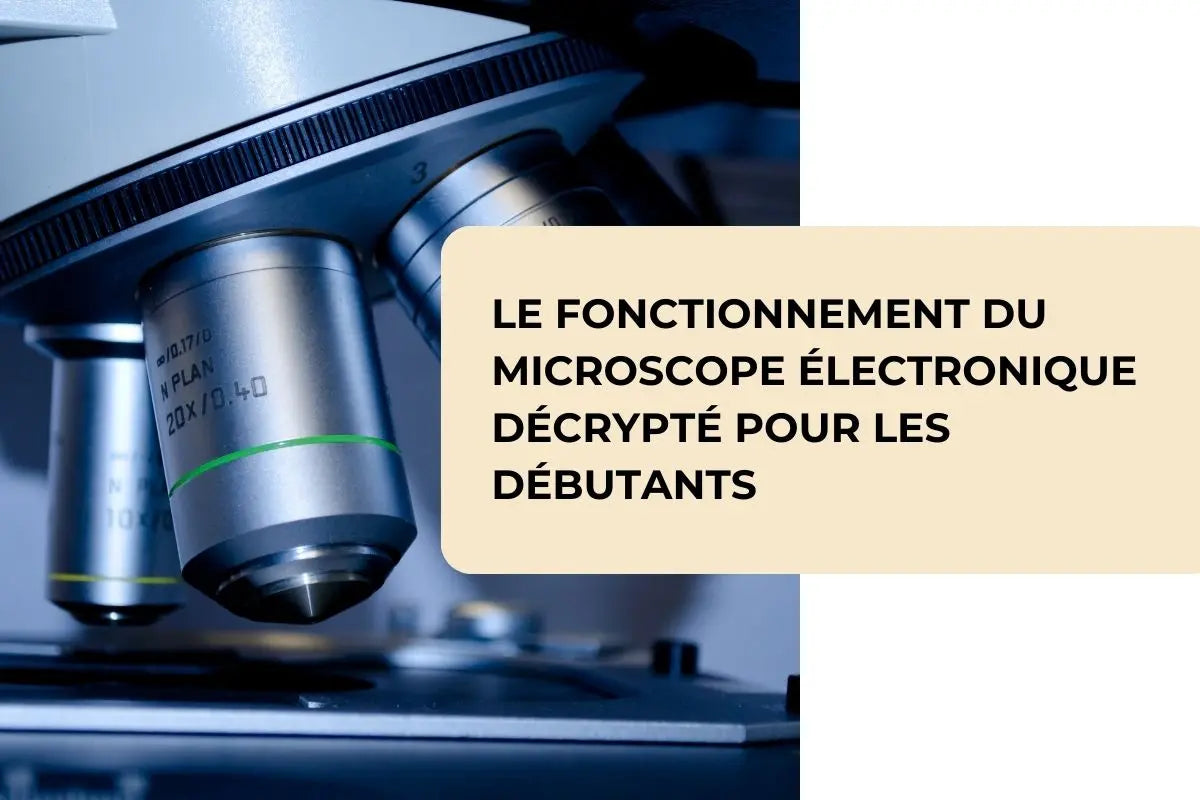
How an electron microscope works explained for beginners
The electron microscope is a fundamental tool for exploring the microscopic world. Thanks to its ability to magnify details invisible to the naked eye, it has revolutionized the way we view the world. In this article, we'll break down how it works and explain its key elements so even beginners can understand what's going on behind this sophisticated device.
What is an electron microscope?
Definition and importance
The electron microscope is a type of microscope that uses electrons to create images of small objects, offering much greater resolving power than traditional optical microscopes. It is essential in fields such as biology, materials science, and nanotechnology. With this technology, researchers can observe cellular structures, composite materials, and even individual molecules.
Types of electron microscopes
There are two main types of electron microscopes: the transmission electron microscope (TEM) and the scanning electron microscope (SEM). The TEM visualizes the internal structure of samples by passing an electron beam through a very thin sample, while the SEM scans the sample's surface with an electron beam, producing detailed 3D images of its topography.

Operating principles
Generation of electrons
An electron microscope begins by generating an electron beam. This can be done using thermionic or field emission sources. In the former, a filament is heated to release electrons, while the latter involves a strong electric field that forces electrons out of a metal tip. This beam is then directed toward the sample.
Electron beam control
Once generated, the electron beam is focused using electromagnetic lenses. These lenses use magnetic fields to control the electron flow, allowing the electrons to be directed and focused onto the sample. This produces a sharp, detailed image of the structure being studied.

Imaging and detection
Interaction of electrons with the sample
When they reach the sample, the electrons interact with the atoms in the material. These interactions can produce different signals, including reflected electrons and transmitted electrons. Electrons that are reflected or pass through the sample are then captured by a detector, which transforms them into a visible image.
Electron detectors
Modern detectors in electron microscopes include digital cameras, which collect data generated by electrons. The resolution of these detectors is crucial because it determines the quality of the final image. Some detectors can achieve a resolution of several million pixels, allowing microscopic details to be observed with remarkable clarity.

Applications of the electron microscope
Scientific research
Electron microscopes are widely used in scientific research to study the structure of materials at the atomic level. They allow scientists to observe proteins, cells, and even viruses, revealing crucial information for biology and medicine. For example, observing the structure of a protein can help develop new drugs.
Industry and materials
In the materials industry, these microscopes are used to analyze the properties of composite materials, semiconductors, and other advanced materials. They help identify defects at the microscopic level, ensuring the quality and performance of manufactured products. This analysis is essential in sectors such as electronics and medical device manufacturing.
Conclusion
In short, the electron microscope is an indispensable tool for exploring and understanding structures at a microscopic scale. Its operation relies on the manipulation of electrons to create detailed images, allowing researchers to make groundbreaking discoveries. Whether in biology, materials science, or other fields, this technology continues to play a crucial role in the advancement of science and technology. For those new to this fascinating world, understanding the basic principles of the electron microscope is an excellent starting point for further exploration.
FAQ
What are the differences between MET and SEM?
The transmission electron microscope (TEM) allows for viewing the interior of thin samples, while the scanning electron microscope (SEM) provides a 3D surface view. The TEM is ideal for internal structures, while the SEM is used for surface details.
Can the electron microscope observe living cells?
Generally, living cells cannot be observed with an electron microscope due to sample preparation, which requires fixed conditions. However, advanced techniques such as cryogenic electron microscopy allow cells to be observed in close to their natural state.
What types of materials can be observed with an electron microscope?
The electron microscope is capable of analyzing a variety of materials, such as metals, semiconductors, and biological tissues. Its ability to detect defects at the nanoscale makes it a valuable tool in scientific and industrial research.




